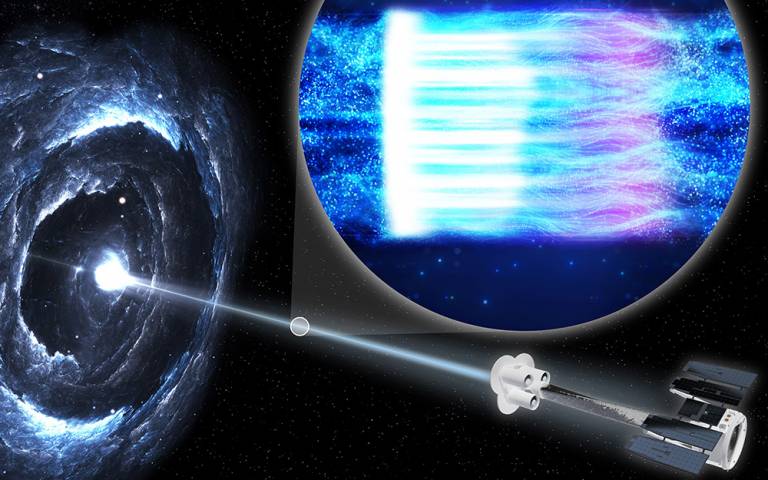Powerful jets of material released by black holes are accelerated far into space by shock waves within the jets, an international collaboration involving UCL researchers has found.

The study, published in Nature, helps to solve a decades-old mystery about how these jets are produced. The research team was able to rule out alternative causes of the jets - such as magnetic reconnection - and, out of a number of theoretical models of how the particles in the jets are accelerated, showed that just one model was correct.
Researchers looked at Markarian 501, a galaxy 456 million light years away, which emits what is known as a blazar - a powerful jet that is especially bright to us because it points towards Earth.
They analysed data from NASA's Imaging X-Ray Polarimetry Explorer, or IXPE, which launched last December, along with observations from a range of other telescopes in space and on the ground.
The satellite, a collaboration between NASA and the Italian Space Agency, for the first time can measure the polarisation of X-ray light in space - that is, it can measure the average direction and intensity of the electric field of light waves that make up X-rays. This information is not accessible to telescopes on Earth because the atmosphere absorbs X-rays from space.
Co-author Professor Zane, who is part of the IXPE science team along with Professor Kinwah Wu (UCL Mullard Space Science Laboratory), explained: "We were able to discard the different models one by one - the model that was left was the simplest. It's a beautiful example of a symmetrical structure, a textbook example."
Dr Yannis Liodakis, lead author of the study and astronomer at FINCA, the Finnish Centre for Astronomy with ESO, said: "This is a 40-year-old mystery that we've solved. We finally had all of the pieces of the puzzle, and the picture they made was clear."






